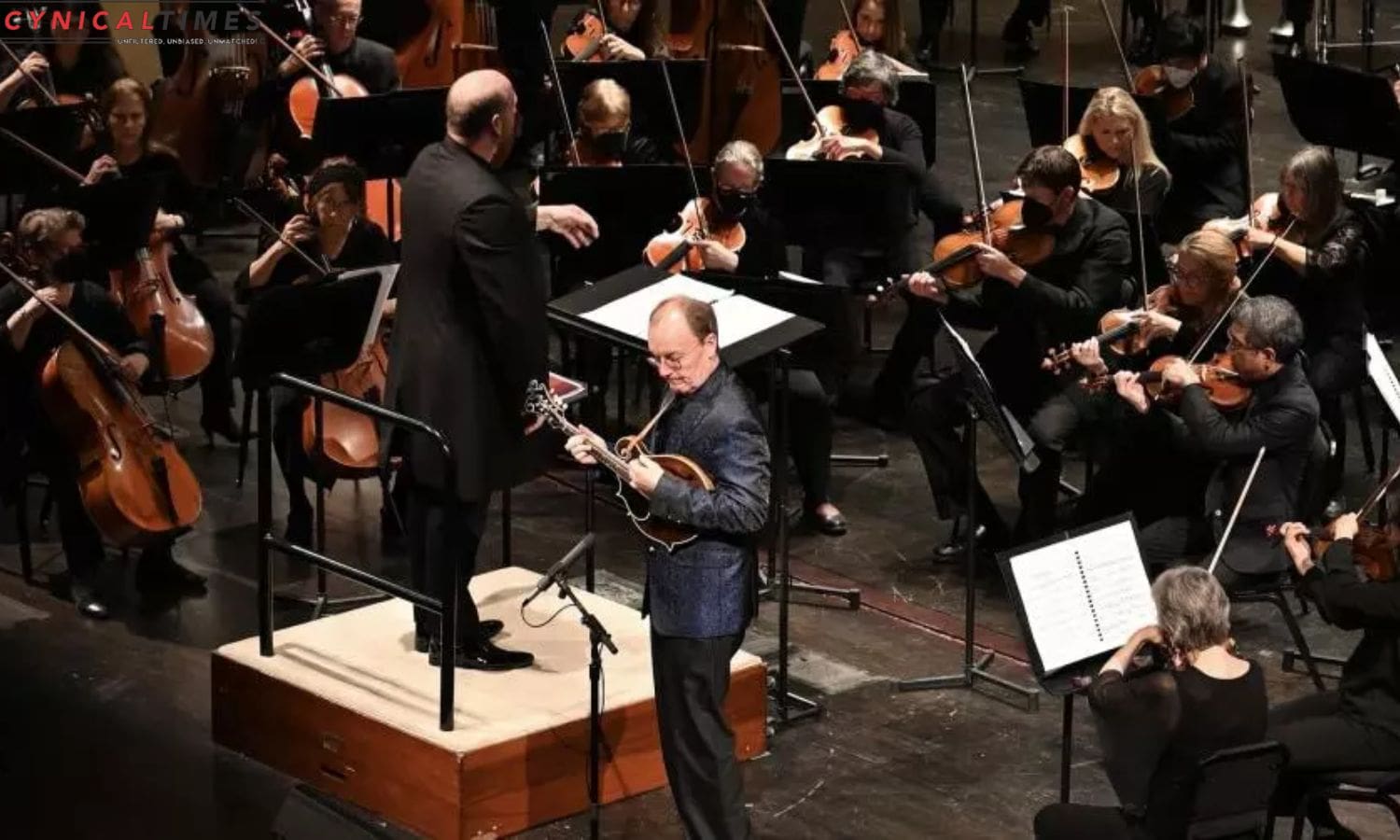Symphony San Jose Musical Tapestry: In a musical extravaganza titled “American Portraits,” Symphony San Jose took center stage at the California Theatre on December 3, presenting a captivating blend of compositions by U.S. maestros. The lively and expressive direction of guest conductor Christopher Rountree, coupled with the orchestra’s remarkable responsiveness, transformed the concert into a symphonic spectacle.
The highlight of the evening was the rendition of Aaron Copland’s ballet, “Rodeo.” Rountree’s bold conducting infused vitality into the Southwestern folk-inspired score, balancing powerful rhythms in the fast segments and graceful elegance in the slower sections. Notably, the inclusion of the complete Rodeo ballet, including the lesser-known “Ranch House Party” with a honky-tonk piano solo, added a unique twist.
Rountree’s skillful direction continued to shine in William Grant Still’s tone poem, “Darker America.” The orchestra masterfully conveyed the somber yet graceful themes of this 1924 work, capturing the essence of African American sorrows and hopes.
The program also featured Charles Ives’s whimsical “Variations on ‘America'” orchestrated by William Schuman, injecting humor into the traditional tune. The juxtaposition of incongruous rhythms and accompanimental figures, reinforced by Schuman’s orchestration, added a playful touch to the concert.


Also Read: Sunnyvale Housing Plan Hits a Snag: Chemical Hurdles
Two contemporary compositions brought a fresh perspective to the lineup. Caroline Shaw’s “Valencia,” an arrangement for string orchestra, offered a vivid and imaginative exploration of the taste of a Valencia orange. Jeff Midkiff, joining the orchestra, showcased his Mandolin Concerto, blending bluegrass and classical influences seamlessly. His roots in bluegrass, especially evident in the incorporation of Bill Monroe’s “Roanoke,” provided a delightful encore.
Midkiff’s concerto, played on a Gibson mandolin with amplified resonance, bridged the worlds of bluegrass and classical, creating a harmonious fusion. The orchestra, providing subtle harmonic backing, engaged in spirited exchanges with the mandolin, creating a joyous atmosphere reminiscent of a lively jam session.
In this symphonic journey through “American Portraits,” Symphony San Jose, under Rountree’s dynamic baton, delivered a musical experience that transcended genres. The concert celebrated the rich tapestry of American compositions, from the classics to contemporary blends, leaving the audience enchanted by the diverse sounds echoing through the California Theatre.
Our Reader’s Queries
Who is the cat on the cover of Tapestry?
Introducing the Tapestry Cat T-shirt, featuring the iconic Telemachus – a tabby cat who has captured the hearts of many. This new addition to our merchandise collection is a must-have for all cat lovers out there. With its unique design and high-quality fabric, this t-shirt is perfect for any casual occasion. Get ready to show off your love for Telemachus and make a statement with this stylish and comfortable t-shirt.
Who is the singer of Tapestry?
Carole King’s Tapestry, her second studio album, hit the shelves in 1971 under the Ode Records label. The album was produced by Lou Adler and showcased King’s exceptional songwriting and vocal abilities.
Who has Carole King been married to?
King has tied the knot four times with Gerry Goffin, Charles Larkey, Rick Evers, and Rick Sorenson. In her memoir published in 2012, King revealed that she had been a victim of physical abuse by her third husband, Rick Evers, on a regular basis.
Does James Taylor sing on Tapestry?
Recording artists James Taylor and Joni Mitchell lent their vocal talents to Tapestry as backing vocalists. Taylor, known for his 1970 release Sweet Baby James, and Mitchell, who won her first Grammy for Clouds in 1969, added their unique voices to the album. Their contributions helped make Tapestry the iconic album it is today.

